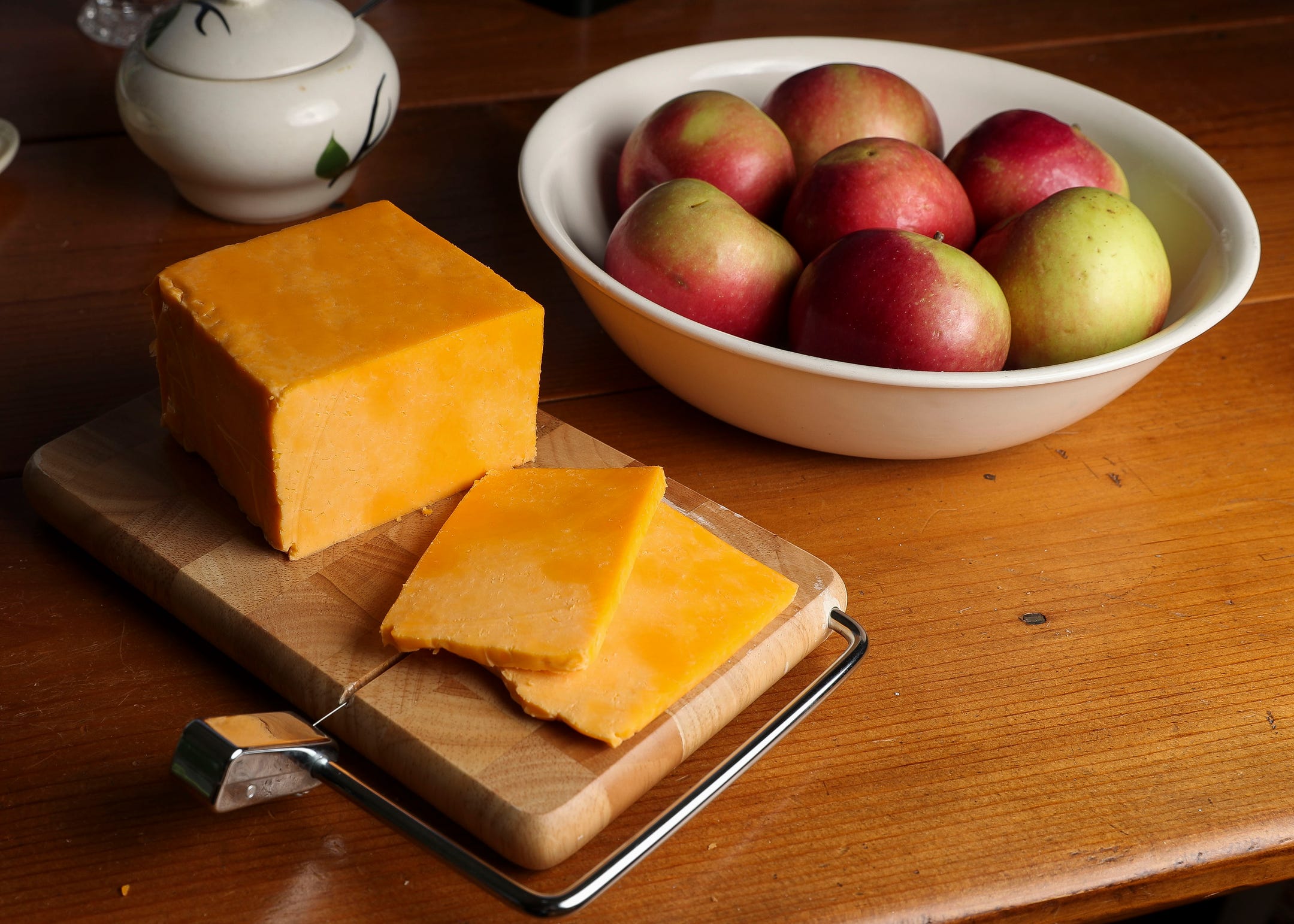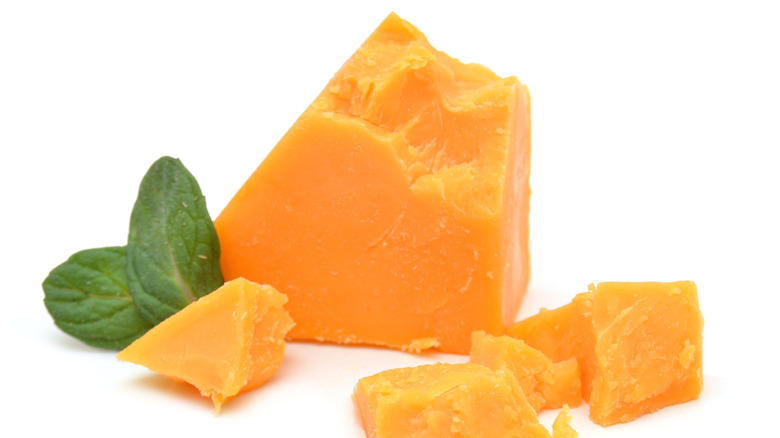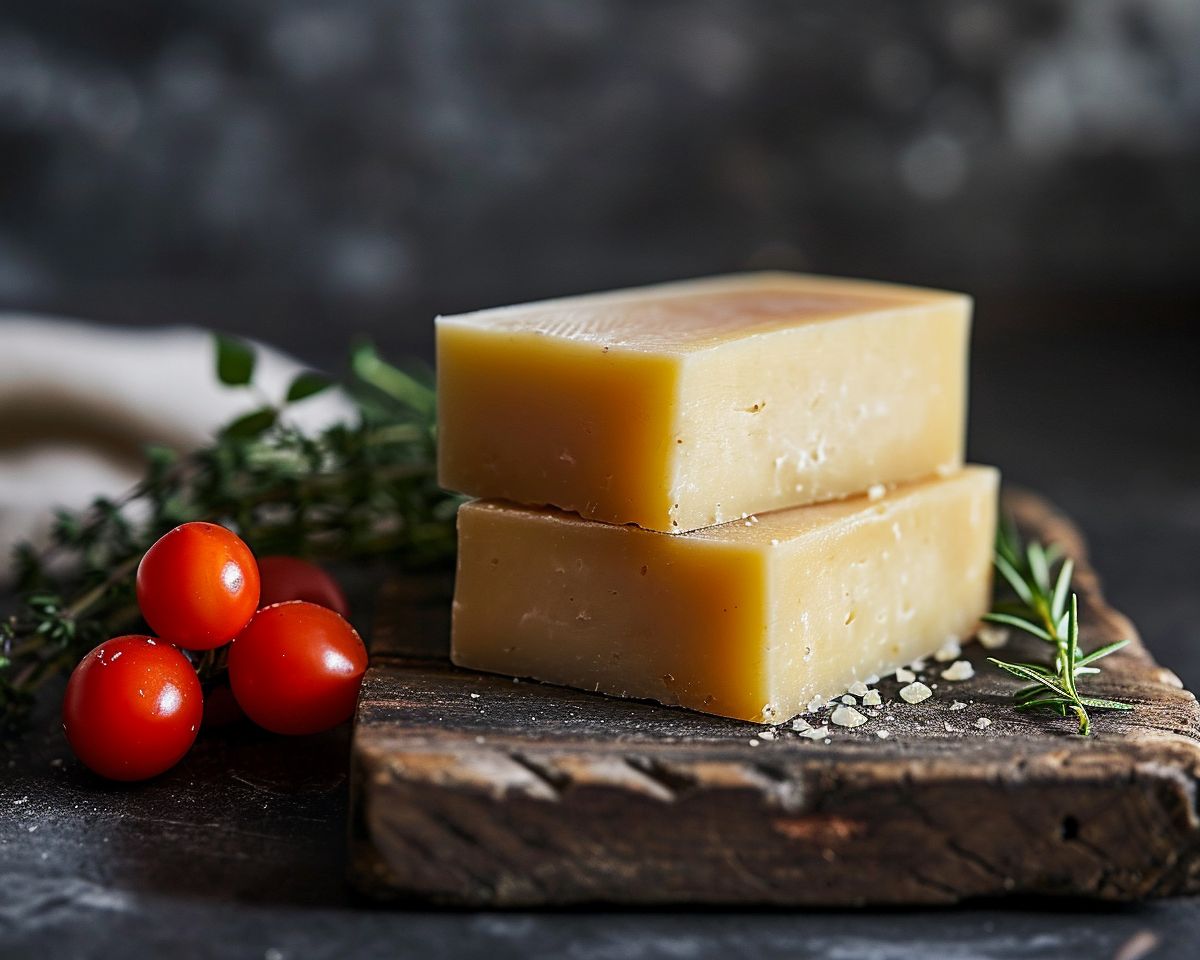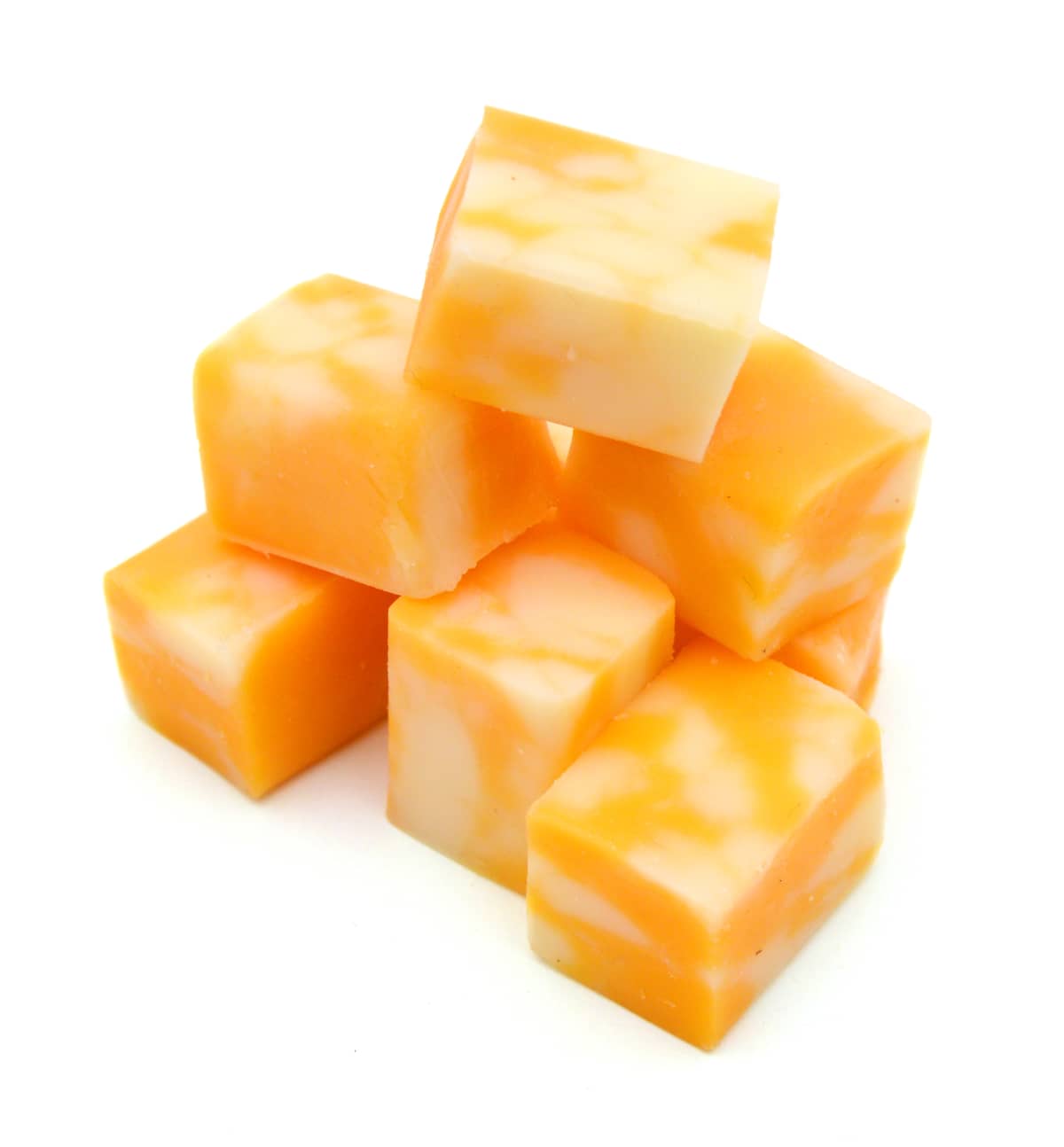Introduction To Cheddar And Colby Cheeses

Cheddar and Colby cheeses are both popular varieties that can add depth and flavor to any cheeseboard. Cheddar, with its origins in England, is known for its rich, sharp, and tangy taste. It has a crumbly and creamy texture, making it ideal for melting and cooking. Colby cheese, on the other hand, originated in the United States and offers a milder and sweeter flavor. It has a softer and more elastic texture, perfect for snacking and sandwiches. Both cheeses have their own unique characteristics, adding versatility and deliciousness to any culinary creation.
History And Origin Of Cheddar And Colby Cheeses
The history of Cheddar cheese dates back to the 12th century in the Somerset region of England. It was originally made by the local farmers to preserve surplus milk. The cheese got its name from the Cheddar Gorge, a famous cheese-producing area. Cheddar quickly gained popularity and became known for its distinct sharp and tangy flavor.
On the other hand, Colby cheese originated in the United States in the late 1800s. It was created by Joseph F. Steinwand, a dairy farmer from Colby, Wisconsin. Steinwand sought to develop a milder and softer cheese than Cheddar, resulting in the creation of Colby cheese. With its sweeter and milder taste, Colby quickly became a beloved American classic.
Both Cheddar and Colby cheeses have a rich history and continue to be enjoyed by cheese enthusiasts all over the world. Their origins and unique flavors make them essential additions to any cheeseboard.
Key Differences In Production And Flavor Profiles
When it comes to production, Cheddar and Colby cheeses take different paths. Cheddar goes through a process called “cheddaring,” where curds are stacked and flipped to develop its unique texture. Colby, on the other hand, is produced by a washing process that gives it a milder taste and a more supple texture.
In terms of flavor, Cheddar boasts a bold and robust profile with its sharp and tangy notes. Its long aging process allows its flavors to deepen and intensify over time. On the other hand, Colby is known for its milder taste, offering a buttery and slightly sweet flavor.
These distinct production methods and flavor profiles make Cheddar and Colby cheeses perfect for different culinary experiences and cheeseboard compositions.
Cheddar Cheese On The Cheeseboard

Cheddar cheese is a versatile addition to any cheeseboard. Its bold and robust flavor profile makes it a standout amongst other cheeses. With its sharp and tangy notes, it pairs well with a variety of accompaniments such as crisp apples, hearty bread, and tangy pickles. Cheddar cheese’s crumbly texture adds a delightful contrast to softer cheeses on the board. Whether you’re enjoying it on its own or combining it with other cheeses, Cheddar cheese is sure to be a crowd-pleaser on any cheeseboard. So, be sure to include Cheddar cheese for a flavorful and diverse cheeseboard experience.
Cheddar Cheese Characteristics And Flavor Notes
Cheddar cheese is known for its distinct characteristics and flavor profile. It has a crumbly and slightly granular texture, making it easy to break apart and enjoy. The color of Cheddar can range from pale yellow to deep orange, depending on the aging process and inclusion of natural annatto coloring. When it comes to taste, Cheddar cheese offers a bold and tangy flavor with a hint of sweetness. It has a pronounced saltiness and a rich, creamy undertone that adds depth to any dish. Whether enjoyed on its own or paired with other ingredients, Cheddar cheese never fails to deliver a flavor experience that is both satisfying and memorable. So, whether you’re adding it to a cheeseboard or melting it on top of a burger, Cheddar cheese is sure to be a crowd-pleaser.
Pairing Options And Serving Suggestions
When it comes to pairing and serving Cheddar cheese, the possibilities are endless. Its bold and tangy flavor pairs well with a variety of foods. For a classic combination, serve Cheddar with sliced apples or pears for a sweet and savory contrast. Alternatively, pair Cheddar with cured meats such as salami or prosciutto for a flavorful charcuterie experience. Cheddar also works wonderfully in sandwiches, burgers, and macaroni and cheese dishes, adding a rich and creamy element. Whether served on a cheeseboard or incorporated into a recipe, Cheddar cheese is sure to elevate your dining experience.
Colby Cheese On The Cheeseboard

Colby cheese, with its creamy texture and mild taste, is a delightful addition to any cheeseboard. Its smooth and slightly tangy flavor pairs well with a variety of accompaniments. Try serving Colby cheese with crisp apple slices or crunchy pretzels for a satisfying combination of flavors and textures. For a more adventurous pairing, pair Colby cheese with a dollop of tangy mustard or a drizzle of honey. The versatility of Colby cheese makes it a crowd-pleasing choice for any cheeseboard. Add a few slices of Colby cheese to your next cheeseboard and watch as your guests enjoy this delicious and versatile cheese option.
Colby Cheese Texture And Taste Profile
Colby cheese is known for its smooth and creamy texture, making it incredibly enjoyable to eat. It has a semi-soft texture that is slightly crumbly, but not as firm as cheddar cheese. The mouthfeel of Colby cheese is incredibly comforting and delightful.
In terms of taste, Colby cheese has a mild and slightly tangy flavor. It is not as bold or sharp as cheddar, but still has a pleasant and balanced taste. The mildness of Colby cheese allows it to be incredibly versatile, as it can be enjoyed on its own or paired with a variety of ingredients. Whether you’re looking for a cheese to snack on or to use in a recipe, Colby cheese is a fantastic choice that will satisfy your taste buds.
Best Accompaniments And Wine Pairings
When it comes to serving Colby cheese on your cheeseboard, there are a few accompaniments that pair perfectly with its mild and tangy flavor. Some popular options include crisp apple and pear slices, salted crackers, and toasted baguette slices. These additions provide a pleasing contrast to the creamy texture of Colby cheese.
When it comes to wine pairings, a light-bodied and fruity Chardonnay is an excellent choice. The fresh and crisp notes of the wine complement the smoothness and subtle tanginess of Colby cheese. Another great option is a Sauvignon Blanc, which adds a hint of citrus that enhances the flavor of the cheese. Both of these wines bring out the best in Colby cheese and create a delightful tasting experience.
So, when you’re preparing a cheeseboard featuring Colby cheese, don’t forget to include some crisp fruits, crackers, and a bottle of Chardonnay or Sauvignon Blanc. This combination guarantees a harmonious balance of flavors that will leave your taste buds satisfied.
Cheddar Vs. Colby: Texture And Melting Properties

When it comes to texture and melting properties, Cheddar and Colby cheeses have distinct characteristics. Cheddar cheese is known for its smooth and dense texture, with a crumbly and slightly granular feel. As it ages, Cheddar becomes drier and more crumbly, making it perfect for grating and melting. It has excellent melting properties, which is why it is commonly used in dishes like mac and cheese or grilled cheese sandwiches. On the other hand, Colby cheese has a softer and creamier texture, which melts smoothly and evenly. It is great for adding a mild and melty goodness to a variety of recipes. So, whether you’re looking for a cheese that adds some boldness and texture to your dishes or one that melts into a creamy delight, both Cheddar and Colby have their unique qualities to offer on your cheeseboard.
Texture And Melting Qualities Of Cheddar And Colby Cheeses
Cheddar and Colby cheeses have distinct textures and melting qualities. Cheddar cheese is known for its smooth and dense texture, with a crumbly and slightly granular feel. As it ages, Cheddar becomes drier and more crumbly, making it perfect for grating and melting. It has excellent melting properties, which is why it is commonly used in dishes like mac and cheese or grilled cheese sandwiches.
Colby cheese, on the other hand, has a softer and creamier texture. It melts smoothly and evenly, giving a velvety consistency to dishes like casseroles or nachos. Whether you’re looking for a cheese that adds some boldness and texture or one that melts into a creamy delight, both Cheddar and Colby have their unique qualities to offer on your cheeseboard.
Uses In Cooking And Recipes
Cheddar and Colby cheeses are not only versatile when it comes to cheeseboards, but they also have a wide range of uses in cooking and recipes. Cheddar cheese’s excellent melting properties make it perfect for dishes like mac and cheese, cheesy bread, or even melted on top of burgers. It adds a rich and bold flavor profile to these dishes. Colby cheese’s softer texture and smooth melting qualities make it a great choice for sandwiches, quesadillas, or as a topping for nachos. Both cheeses can also be shredded or grated to add a cheesy touch to salads, soups, or casseroles. The possibilities are endless when it comes to incorporating Cheddar and Colby cheeses into your favorite recipes.
Flavor Comparison: Cheddar Vs. Colby

When it comes to flavor, Cheddar and Colby cheeses have distinct profiles that set them apart. Cheddar cheese is known for its robust and sharp flavor, with a slightly tangy and nutty undertone. Its aging process gives it a rich and complex taste that intensifies over time. On the other hand, Colby cheese is milder and sweeter, with a smoother and more delicate flavor. It has a subtle sweetness that makes it a crowd-pleaser for those who prefer a gentler cheese. Whether you prefer the boldness of Cheddar or the mildness of Colby, both cheeses offer a delicious and enjoyable taste experience.
Flavor Profiles And Intensity Of Cheddar And Colby Cheeses
When it comes to flavor, Cheddar and Colby cheeses have distinct profiles that set them apart. Cheddar cheese is known for its robust and sharp flavor, with a slightly tangy and nutty undertone. Its aging process gives it a rich and complex taste that intensifies over time. On the other hand, Colby cheese is milder and sweeter, with a smoother and more delicate flavor. It has a subtle sweetness that makes it a crowd-pleaser for those who prefer a gentler cheese. Whether you prefer the boldness of Cheddar or the mildness of Colby, both cheeses offer a delicious and enjoyable taste experience.
Taste Preferences And Versatility In Dishes
When it comes to taste preferences, some individuals may lean towards the bold and robust flavor of Cheddar cheese, while others may prefer the milder and creamier taste of Colby cheese. These preferences can greatly influence the dishes in which these cheeses are used. Cheddar cheese, with its sharpness and complexity, is a great choice for adding depth and richness to macaroni and cheese, burgers, and grilled cheese sandwiches. On the other hand, Colby cheese’s subtle sweetness and smooth texture make it a versatile option for salads, wraps, and cheese plates. Whether you’re looking for a cheese to star in a dish or complement other flavors, both Cheddar and Colby cheeses have the versatility to satisfy a range of culinary tastes.
Conclusion

In conclusion, the battle between Cheddar and Colby cheese on the cheeseboard has brought forth two distinct but equally delicious options. Cheddar cheese stands out with its bold flavor and versatile uses, adding depth and richness to various dishes. On the other hand, Colby cheese offers a milder taste and a smooth, creamy texture, making it a versatile choice for salads, wraps, and cheese plates. Both cheeses have their unique characteristics and can cater to different taste preferences. When creating the ultimate cheeseboard, it is recommended to include both Cheddar and Colby cheese to provide a balanced and diverse tasting experience.
Summary Of Differences Between Cheddar And Colby Cheeses
Cheddar and Colby cheeses may both be popular choices for a cheeseboard, but they have distinct differences. Cheddar cheese offers a bold flavor profile with a range of intensities and is known for its versatility in cooking. On the other hand, Colby cheese has a milder and sweeter taste, with a smoother and creamier texture. Another key difference lies in the cheesemaking process, where Colby curds are rinsed with cold water while Cheddar curds are not. Additionally, Cheddar cheese can be aged for longer periods compared to Colby. When creating the ultimate cheeseboard, it’s recommended to include both varieties to provide a balanced and diverse tasting experience.
Tips For Creating The Ultimate Cheeseboard Showcasing Both Varieties
When creating the ultimate cheeseboard showcasing both Cheddar and Colby varieties, it is important to consider the following tips:
- Variety is key: Include a selection of cheddar and Colby cheeses along with other varieties such as brie, gouda, or blue cheese. This ensures there is something for everyone’s taste.
- Texture and color contrast: Add a mix of soft, creamy cheeses and harder, aged cheeses for a textural contrast. Incorporate colorful fruits like grapes, berries, or figs for a visually appealing display.
- Consider accompaniments: Include a variety of accompaniments such as crackers, bread, olives, nuts, and cured meats to complement the flavors of both cheddar and Colby cheeses.
- Arrange with care: Arrange the cheeses and accompaniments on the cheeseboard in an aesthetically pleasing manner. Consider using different shapes and sizes to create visual interest.
- Label the cheeses: Provide small labels or tags for each cheese variety to help guests identify and learn about the different flavors and characteristics of cheddar and Colby.
By incorporating these tips, you can create a visually appealing and delicious cheeseboard that showcases the distinctive flavors of both cheddar and Colby cheeses.
FAQ About Cheddar Vs Colby: Cheeseboard Showdown
Q: What is the main difference between Cheddar and Colby cheese?
A: The main difference between Cheddar and Colby cheese lies in their texture and flavor profile. Cheddar is known for its sharp, crumbly texture and bold flavor, while Colby cheese is softer, milder, and has a more elastic texture.
Q: Which cheese is more suitable for a cheeseboard – Cheddar or Colby?
A: Both Cheddar and Colby cheese can be a great addition to a cheeseboard. Cheddar offers a more robust flavor that pairs well with meats and fruits, while Colby’s mild taste complements crackers and nuts. It ultimately depends on your preference and the other selections on your cheeseboard.
Q: Can Cheddar and Colby cheese be used interchangeably in recipes?
A: While Cheddar and Colby cheese are both types of semi-hard cheeses, their differences in flavor and texture can impact the outcome of a recipe. Cheddar’s bold flavor may overpower a dish where a milder taste is desired, while Colby’s softer texture may not melt as well as Cheddar. It’s best to choose the cheese based on the recipe’s flavor profile.
Q: Are there any nutritional differences between Cheddar and Colby cheese?
A: In terms of nutrition, Cheddar and Colby cheese are similar as they both provide protein, calcium, and fat. However, Cheddar cheese typically contains more saturated fat and calories compared to Colby cheese due to its aging process. If you’re watching your fat intake, you may opt for Colby cheese as a lighter option.
Q: How should Cheddar and Colby cheese be stored to maintain freshness?
A: To keep Cheddar and Colby cheese fresh, it is best to store them in the refrigerator in a tightly sealed container or wrapped in wax paper. Make sure to keep them away from strong-smelling foods as they can absorb odors easily. Both cheeses can also be frozen for longer-term storage, but the texture may be slightly altered upon thawing.
Q: Can lactose-intolerant individuals consume Cheddar and Colby cheese?
A: Generally, aged cheeses like Cheddar and Colby have lower lactose levels compared to fresh cheeses, making them a more tolerable option for some lactose-intolerant individuals. However, it’s essential for those with lactose intolerance to monitor their tolerance levels when consuming these cheeses and consult a healthcare provider if needed.

Duke City Kitchen, known for its fresh, simple, and delicious cuisine, has a rich history deeply rooted in the heart of the local food scene. Since its inception, Duke City Kitchen has been dedicated to providing an exceptional dining experience that celebrates the region’s flavors. Founded by a passionate group of food enthusiasts, Duke City Kitchen opened its doors with the vision of offering a welcoming space where people could gather to enjoy thoughtfully prepared meals made from the finest, locally sourced ingredients. This commitment to quality and community has been a driving force behind Duke City Kitchen’s success.